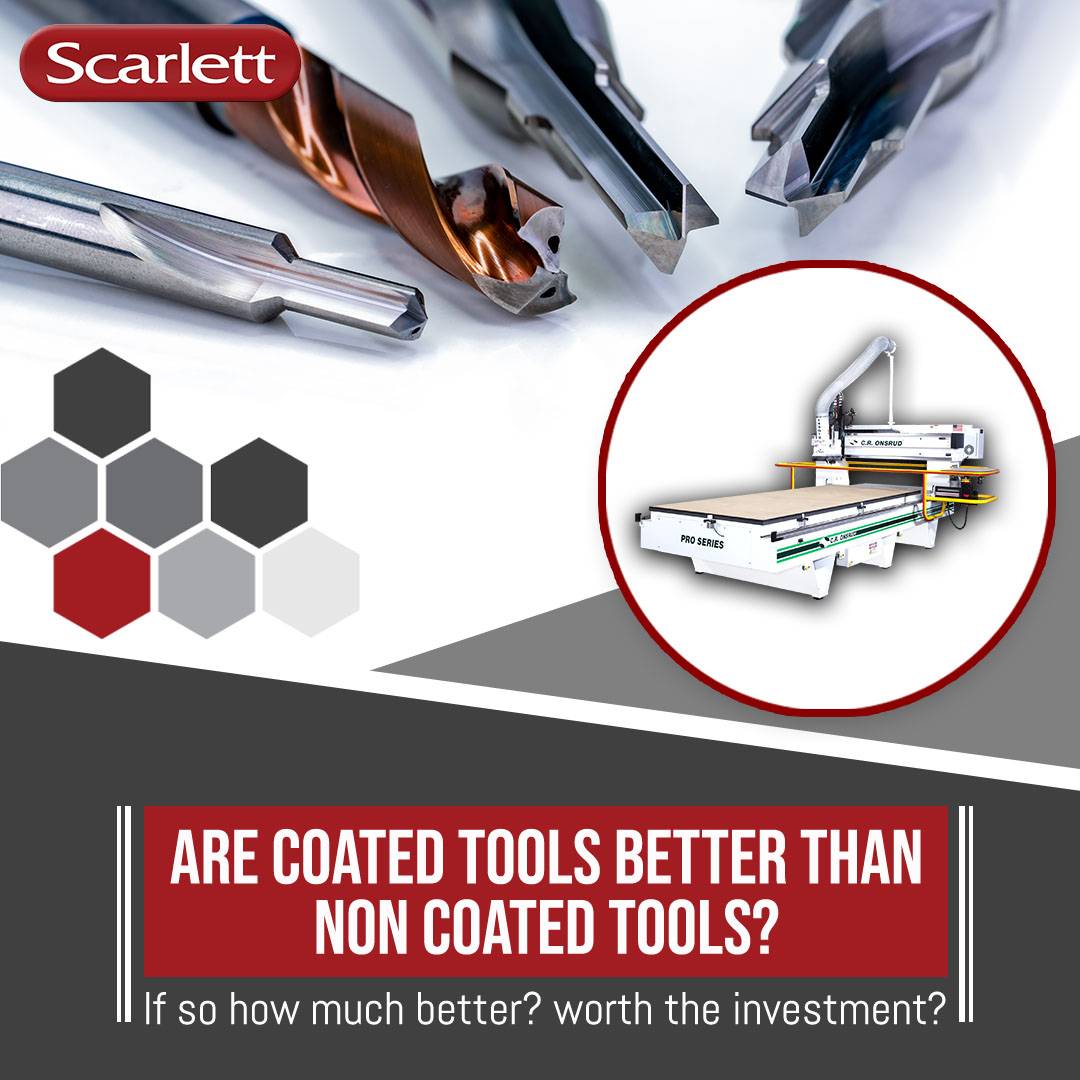The Great Debate: Coated CNC Tools vs. Non-Coated Tools – Unveiling the Benefits and Worthiness of Investment
The Great Debate: Coated CNC Tools vs. Non-Coated Tools – Unveiling the Benefits and Worthiness of Investment
Introduction:
When it comes to CNC (Computer Numerical Control) tooling, one of the key considerations for manufacturers and machinists is whether to opt for coated tools or non-coated tools. Coatings are thin layers of specialized materials applied to the surface of cutting tools, offering a range of benefits. In this article, we delve into the coated vs. non-coated tools debate, exploring the advantages of coated tools, assessing their effectiveness, and determining whether the investment is worthwhile.
- Understanding Coated CNC Tools:
Coated CNC tools are engineered with a variety of specialized coatings to enhance their performance and durability. Common types of coatings include TiN (Titanium Nitride), TiCN (Titanium Carbonitride), TiAlN (Titanium Aluminum Nitride), and DLC (Diamond-Like Carbon). These coatings alter the tool’s surface properties, resulting in improved wear resistance, increased tool life, and enhanced cutting performance.
- Benefits of Coated Tools:
a. Enhanced Tool Life: Coated tools exhibit superior wear resistance, meaning they can withstand higher cutting speeds and feeds without wearing out as quickly as non-coated tools. This longevity translates into reduced downtime for tool changes, increased production efficiency, and cost savings.
b. Increased Cutting Speeds: The low friction and heat resistance properties of coatings allow for higher cutting speeds, resulting in shorter machining cycles and improved productivity. Coated tools can effectively handle demanding machining operations and materials that would otherwise cause premature tool failure.
c. Improved Surface Finish: Coated tools provide excellent surface finish quality, reducing the need for secondary operations such as polishing or grinding. This not only saves time and effort but also ensures consistent and high-quality machined parts.
d. Temperature and Chemical Resistance: Coatings act as a protective barrier against heat and chemical reactions during machining processes. They mitigate the effects of thermal expansion, preventing tool deformation and maintaining dimensional accuracy, even in challenging cutting conditions.
- Effectiveness of Coated Tools:
The effectiveness of coated tools depends on various factors, including the specific application, workpiece material, cutting parameters, and the chosen coating. In general, coated tools excel in high-speed machining, difficult-to-machine materials (such as hardened steels and exotic alloys), and operations where surface finish quality is critical.
However, it’s essential to consider the limitations of coated tools. Extremely abrasive materials or interrupted cutting conditions may cause premature wear on the coating, reducing its effectiveness. Additionally, coatings may not provide significant benefits for low-speed applications or softer materials where tool wear is less pronounced.
- The Investment Worthiness:
The decision to invest in coated CNC tools depends on several factors, including the nature of the machining operations, the expected tool life improvement, and the cost considerations. While coated tools are generally more expensive than non-coated alternatives, they offer a remarkable return on investment in the right circumstances.
By extending tool life, reducing machining time, and minimizing the need for secondary operations, coated tools contribute to increased productivity, improved part quality, and overall cost savings. However, it’s crucial to analyze the specific requirements of your machining processes and consider the potential benefits in relation to the additional cost of coated tools.
Conclusion:
Coated CNC tools undoubtedly offer numerous advantages over non-coated tools, including enhanced tool life, increased cutting speeds, improved surface finish, and temperature/chemical resistance. The investment in coated tools can yield substantial benefits, such as improved productivity, reduced downtime, and cost savings in the long run. However, it is important to assess the specific machining requirements and weigh the benefits against the added cost to determine whether the investment in coated tools is justified. Ultimately, a careful evaluation of your application needs

